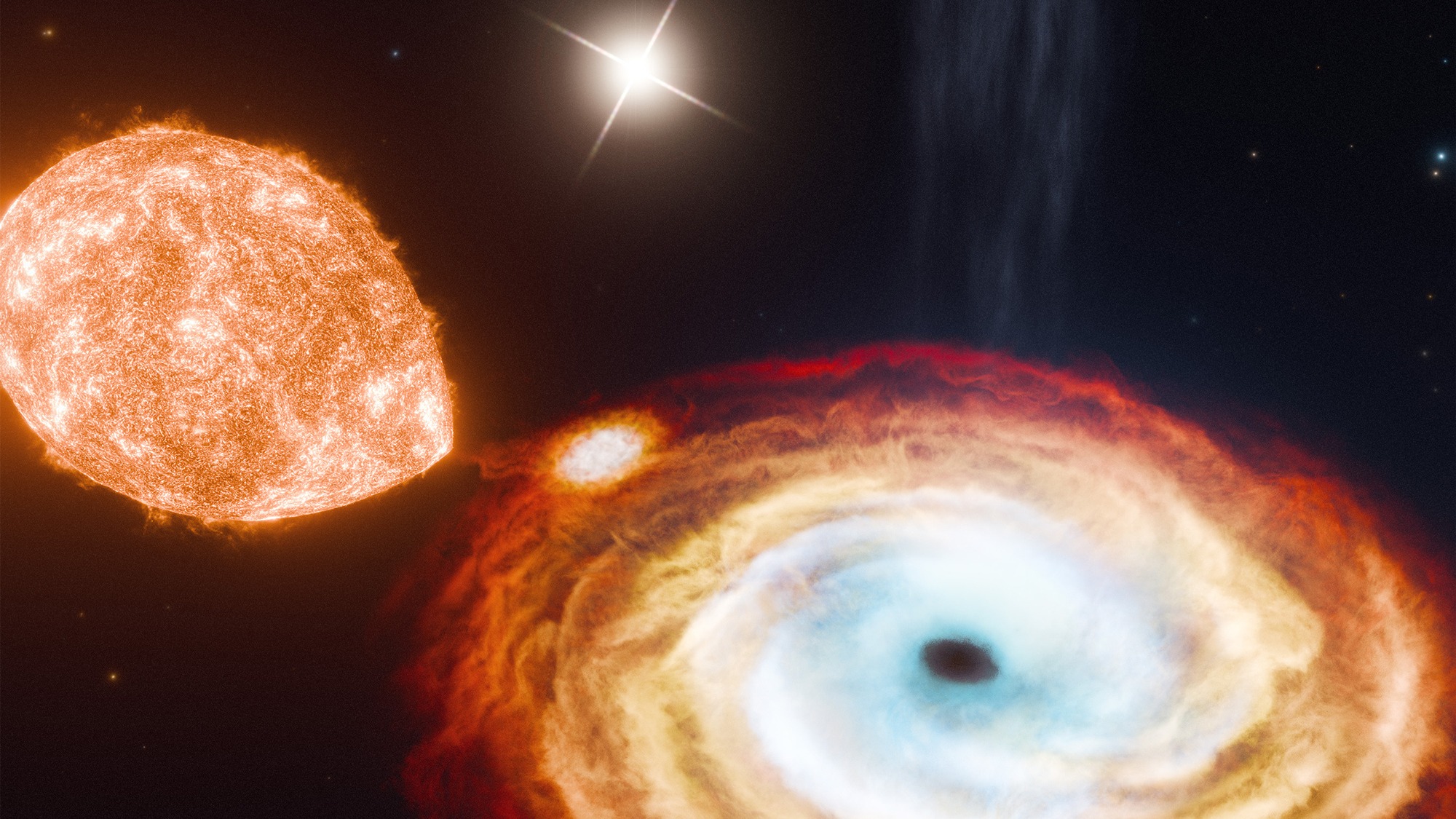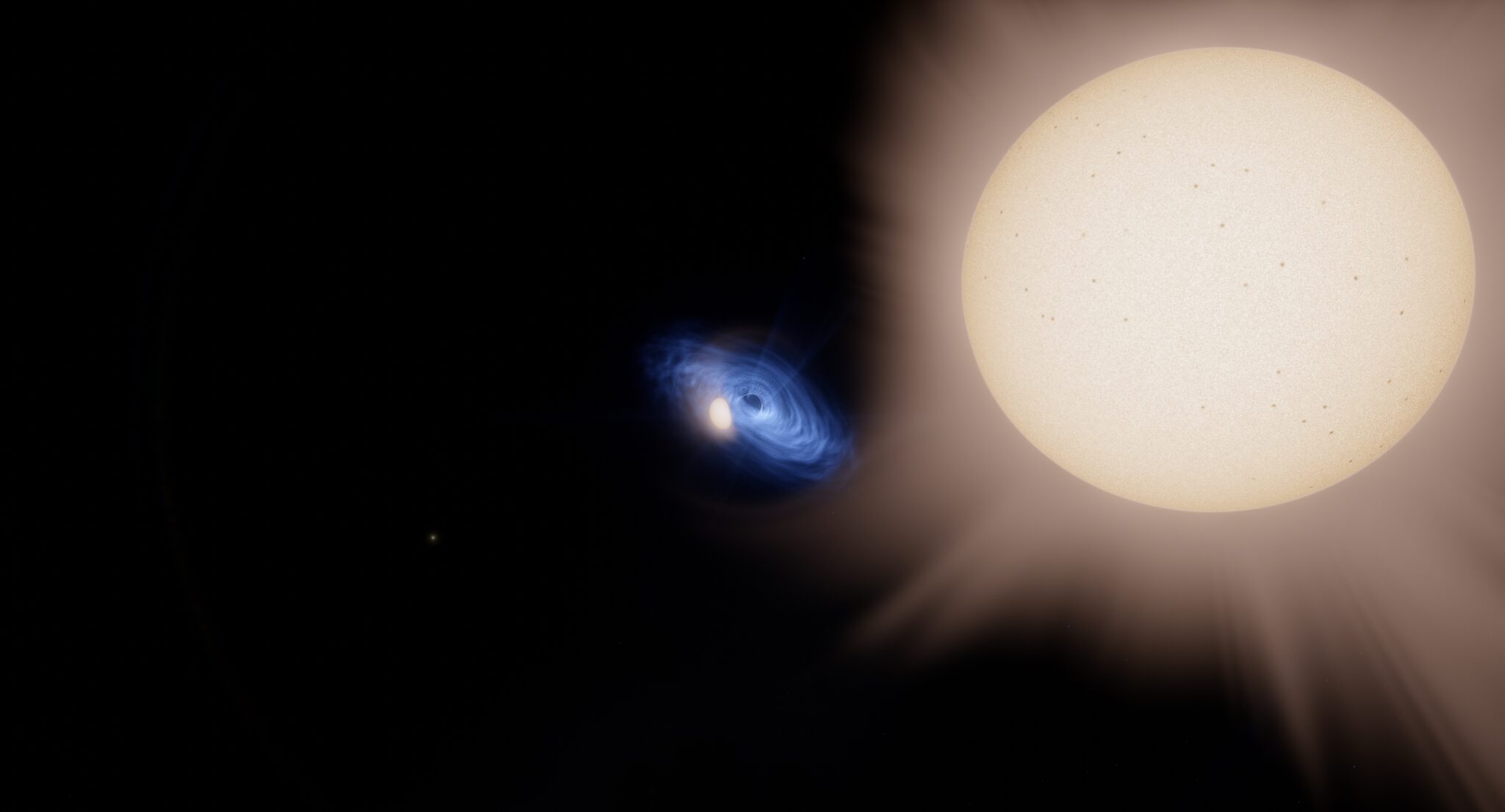Physicists from the Massachusetts Institute of Technology and the California Institute of Technology have for the first time discovered a triple system located about 7,800 light-years from Earth. This system consists of one black hole and two stars orbiting each other.

Binary systems with one of the bodies being a black hole are quite common in the Universe. A black hole is often observed to absorb a star orbiting around it. However, a recent discovery has added a new dimension by revealing a system in which a black hole interacts with two stars. The findings were published in the journal Nature.
“We think most black holes form from violent explosions of stars, but this discovery helps call that into question,” said Kevin Burdge, co-author of the study. He emphasized that this system is interesting for studying the evolution of black holes.
Sounds of black hole
The object of study was the V404 Cygni system, which contains a black hole with a mass of about nine solar masses. This black hole was first confirmed as an object in 1992. In 2022, NASA turned light echoes from V404 Cygni into sound signals, allowing scientists to “hear” its activity.
Black holes are objects with such strong gravity that light cannot leave them, so they appear completely dark. Their formation is usually attributed to supernova explosions of stars. Until now, V404 Cygni was thought to be a binary system in which a black hole and a star orbit around each other. However, new evidence suggests the presence of another star that is at a much greater distance from the black hole.
According to measurements, the inner star orbits the black hole about once a week, while the outer star takes about 70,000 years for one orbit. It is about 3,500 astronomical units away from the black hole, which is 100 times the distance between Pluto and the Sun. This indicates that V404 Cygni is a triple system, albeit separated by a large distance.
Three calm bodies
The researchers also found that a normal supernova couldn’t explain the formation of such a system. The vast majority of simulations indicate that a black hole could have formed from the direct collapse of a star as it collapses without exploding.

The age of the outer star helped the team estimate the age of the entire system – about 4 billion years old, which is slightly younger than our Sun, whose age is 4.6 billion years old. For comparison, the age of the Universe is approximately 13.77 billion years.
Contrast to the three bodies described in Qilin Xu’s book, where the stars move in an unpredictable orbit, the real system is calmer, albeit extreme due to the presence of a black hole.
We previously reported on how a one-of-a-kind triple star system “ate” a fourth star.
Provided by popsci.com


